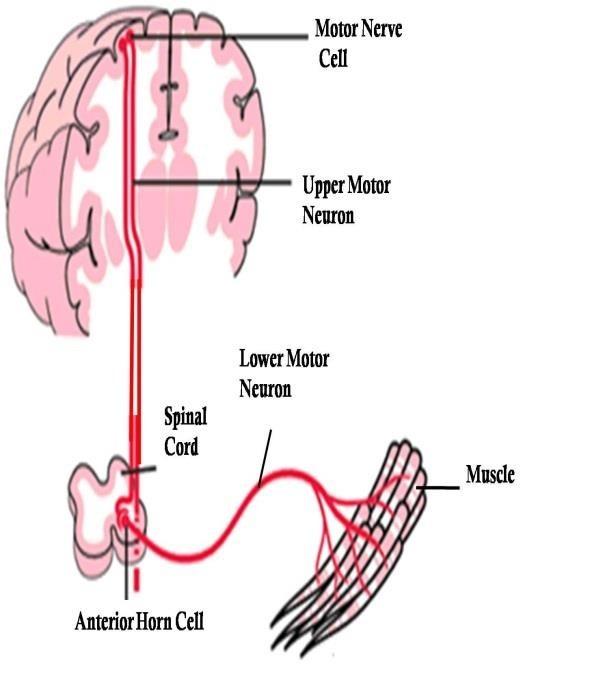Understanding the nervous system
Before we get to know what motor neuron disease (MND) is, let us first understand about the bodya system affected by motor neuron disease. MND is a disease of nerves and thereby even muscles are affected. This chapter will briefly explain the basic structure and function of motor neuron disease and how this is altered by MND.
Any movement in the human body requires synchronized work from musculoskeletal systems (bones and muscles of the body) and nervous system (brain and nerves) in the body. The nervous system is categorized in 3 types of nervous systems,
 Central nervous system is made of brain and spinal cord. There are tracks of fibers that originate from brain and run down across the spine as spinal cord. Central nervous system is the controlling unit of the whole body. This system receives the information from peripheral nervous system and upon analyzing gives commands to bring about required actions.
Central nervous system is made of brain and spinal cord. There are tracks of fibers that originate from brain and run down across the spine as spinal cord. Central nervous system is the controlling unit of the whole body. This system receives the information from peripheral nervous system and upon analyzing gives commands to bring about required actions.
Peripheral nervous system:
Peripheral nervous system consists of the nerve fibers that originate from spinal cord and are spread throughout the body to form a web. The function of this system is to receive information from various parts of the body and convey it to the spinal cord and brain as well as to execute the commands sent from brain and spinal cord.
Autonomic Nervous system:
Located along the spinal cord this system is independent of the central nervous system. It has an access to the information gathered by peripheral system and can control the peripheral nervous system. This nervous system controls the functioning of the internal organs. It consists of two divisions, Sympathetic nervous system and parasympathetic nervous system.
Central and peripheral nervous systems consist of two types of nerve cells (neurons)
- Sensory neurons – These fibers carry sensations like touch, pain, joint movement, pressure, vibration, tastes etc. to the brain
- Motor neurons – These fibers carry the signals from the brain and bring about movements in the muscles of the body. These are further divided into upper and lower motor neuron.
- Upper motor neurons: Upper motor neurons and the nerve cells that originate in the brain and end at the level of spinal cord
- Lower motors neurons: Lower motor neurons are the nerve cells that originate in the spinal cord and are spread all throughout the body
The musculoskeletal system
The lower motor neurons then enter the muscles to stimulate the muscles bring about the muscle contraction. When muscles contract they move bones to bring about movement. Every movement in the body is controlled by motor nerves.
 What is motor neuron disease?
What is motor neuron disease?
In Motor Neuron Diseases (MND), the motor neurons start dying. and this causes muscle weakness in various parts of the body. Thus the affected nerves stop sending messages to the muscles gradually leading to weakness and thinning (atrophy/wasting) of those muscles. Motor neuron disease encompasses a group diseases depending upon which of the motor neurons are damaged.








